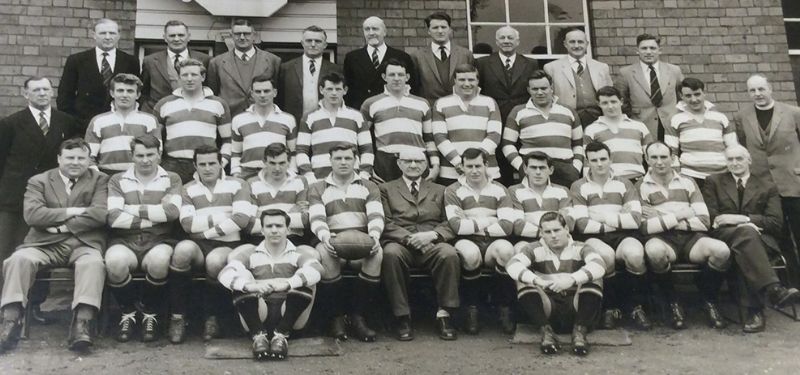- Home
- News, Articles & Reviews
- All Sport
- Cricket
- Cycling
- Football
- Golf
- Horse Racing
- Rugby Union
- Angling
- Archery
- Athletics
- Basketball
- Bowls
- Boxing
- Croquet
- Dance
- Darts
- Diving
- Duathlon
- Equestrian
- General
- Gymnastics
- Hockey
- Martial Arts
- Modern Pentathlon
- Motorsport
- Mountain Biking
- Netball
- Padel
- Parasport
- Polo
- Powerboating
- Powerlifting
- Rowing
- Rugby League
- Running
- Scuba Diving
- Shooting
- Skiing
- Skittles
- Snooker
- Squash
- Swimming
- Table Tennis
- Tennis
- Triathlon
- Tug of War
- Walking
- Walking Football
- Water Polo
- Weightlifting
- Wheelchair Tennis
-
Sport
- All Sport
- Cricket
- Cycling
- Football
- Golf
- Horse Racing
- Rugby Union
- Angling
- Archery
- Athletics
- Basketball
- Bowls
- Boxing
- Croquet
- Dance
- Darts
- Diving
- Duathlon
- Equestrian
- General
- Gymnastics
- Hockey
- Martial Arts
- Modern Pentathlon
- Motorsport
- Mountain Biking
- Netball
- Padel
- Parasport
- Polo
- Powerboating
- Powerlifting
- Rowing
- Rugby League
- Running
- Scuba Diving
- Shooting
- Skiing
- Skittles
- Snooker
- Squash
- Swimming
- Table Tennis
- Tennis
- Triathlon
- Tug of War
- Walking
- Walking Football
- Water Polo
- Weightlifting
- Wheelchair Tennis
We are hiring! Please click here to join our growing magazine delivery team in Gloucestershire!
Areas
Sport
Tags
Archive

Back in the Day: John Bayliss, Gloucester Rugby Club, Gordon League Rugby Club
All Areas > Sport > Rugby Union
Author: Roger Jackson, Posted: Wednesday, 24th January 2018, 09:00
John Bayliss is an entertainer. He was an entertainer on the rugby pitch for Gloucester in the 60s and 70s and he’s still an entertainer today, delivering almost as many punchlines in a one-hour-plus interview as he did crunching tackles back in the days when he was one of the men who put the ‘King’ into Kingsholm.
He was a centre of some repute – rough, tough and uncompromising, taking on all-comers whether he was attacking or defending and never taking a backward step.
He was renowned for his tackling – he was as hard as the terraces where the Gloucester faithful stood and watched in awe – but he could play a bit as well and just like fellow Gloucester legends Mickey Booth and Dick Smith, he was desperately unlucky not to win an England cap.
Born and bred in Gloucester, Bayliss, 75 in March, was always going to play rugby in a city that lived and breathed the sport.
“I first had an interest in rugby when my dad, Jack, took me down to Rotol to watch them play,” Bayliss said.
“My dad played for them and I’d be about three or four. He was a big guy and played in the second row. He also had a few games for Newport which is where he was from. I thought he was pretty good although you always think that your dad is good, don’t you!
“Rotol had some good players – Fanny Walden, Herbie Rickards and Gilbert Locke.”
Bayliss’ earliest memories of playing rugby were a bit more basic.
“We’d put two coats down at each end of a pitch,” he chuckled. “I’d be about eight years old. I was always a bit of a devil in the tackle and I remember tackling Tony Cooke and breaking his leg.”
It wasn’t long before Bayliss was playing proper rugby and his first game was for Fielding and Platt, the engineering firm in Gloucester.
He enjoyed playing for them but although the young Bayliss clearly had something about him, he was soon to discover that rugby could be an unforgiving game.
“We went up to London to play,” he recalled. “I was only 11 and was younger than everyone else. The home team was a player short so I got put on the wing to play against Fielding and Platt.
“I was supposed to be marking my cousin Trevor Lawrence, who although three years older was only an inch taller than me. But they put me on the wrong wing and I was up against John Burrows who was 6ft 2in!”
He survived that ‘little v large’ showdown of course and it wasn’t too long before he was getting a runout in the club’s 2nd XV.
And by the age of 15 he was deemed ready to play for the 1sts.
“I’d always played in the centre,” he said. “Basically I was an inside centre and I took a lot of crash balls. But I’d also make a lot of dummy runs and get the opposition to think I was going to take the ball.
“I was very quick over 10-15-20 yards. At outside centre you needed to run 60 yards, you needed a lot of legs.”
Bayliss’ all-action style was impressing knowledgeable rugby folk up and down the county, and he was still sweet 16 when he got his first taste of the big-time when he received a call-up to play for Gloucester United.
In those days it was much easier for Gloucester-born players to play for the club of their dreams and it saddens Bayliss to see so few players from the city wearing the Cherry and White shirt these days.
“Nowadays it’s very difficult for the 15 and 16-year-olds in Gloucester to break through,” he said. “But those players are still out there. All the Gloucester legends – John Watkins, Steve Boyle, Mike Burton, Terry Hopson, Peter Ford – were bred in Gloucester.
“My first game for Gloucester was against Leicester at Kingsholm. I was 17 and I was a late replacement after Jeremy Taylor withdrew. The captain Peter Ford sent his usual telegram... ‘Be at Kingsholm for 2pm!’“
So how did Bayliss get on?
“I was brilliant for 40 minutes,” he laughed, “and then my legs went. It was a much faster pace than anything I’d been used to. I’d put so much into the game but in those days there were no subs so after half-time I had to start again.
“I remember we beat Leicester. We always struggled to beat Leicester at Leicester and they struggled at Kingsholm. Whether that had anything to do with the standard of refereeing I don’t know!”
While the performances of the referees may have been brought into question on occasion, there was no doubting Bayliss’ obvious quality, and within a year of his Gloucester debut he was lining up for Gloucestershire against Monmouthshire.
“It was always an honour to play for Gloucestershire,” said Bayliss, who was capped more times by his county than anyone else.
“In those days it was a step up, all the internationals played in the county championship. It was almost like an England trial.
“I remember Monmouthshire had a brilliant back row – John Lelou, Alan Pask and Hayden Morgen. The selectors brought me in to have a look at me, but I played reasonably well and they kept me in.”
It was all going so well for the young Bayliss and there was even better news to come because he got selected to play for Western Counties against the touring All Blacks.
That was when he suffered his first big setback.
“I tore ligaments in a knee in a county championship against Somerset,” he said. “It was a bad injury but I remember strapping it up and staying on the pitch.”
And while that injury was not good, it was not the worst that he suffered in his career.
“That was in 1973 when I broke my neck,” he said. “It was a midweek game and I’d had flu and been out for a couple of weeks. My dad had died at Christmas and I shouldn’t have played.
“It was against Loughborough College and I mistimed my tackle. I thought I’d never play again.”
What made the injury even tougher to take was that while he was recovering Gloucestershire won the county championship, something that he had not achieved and something that had been a burning ambition of his for many years.
They were pretty dark days but he was offered a lifeline by Mike Poole of Newent.
“He said, ‘Come and play outside-half for us’,” said Bayliss. “I’d played there for England Schoolboys – I also played full-back for them and was in their team for five years in a row which is still a record.
“The Newent game was against Spartans which is never the friendliest of fixtures!
“I got through it okay and they asked me if I wanted another game and I said I’d play in the centre. It was against Cinderford and I remember thinking, ‘This is pleasant!’
“I’d not done any training but then Gloucester said would I come and play for their 2nds, so I did. It was away to Cinderford!
“The following week was county championship week and Gloucester were short so they asked me to play for their first team. It was away to Newport which in those days was very tough.”
Bayliss came through his baptism of fire – of course he did – and this was one sporting story that had a very happy ending because he got back into the Gloucestershire side and they went on beat Lancashire in the final that very same season. And it got even better for Bayliss because he captained his beloved county to two further titles in 75 and 76.
The big games came around rat-a-tat-tat in those days and Bayliss remembers being selected by Western Counties to play against New Zealand and Fiji.
“The All Blacks were pretty hard,” recalled Bayliss. “They used to just ruck you. You’d have stud marks all over you after a game.
“But the hardest game was against Fiji even though we beat them and lost to New Zealand.”
So why was the Fiji game so tough?
“It coincided with their independence day,” chuckled Bayliss. “They brought the King, the Queen, the President and all the King’s men to Kingsholm. It was so important to them and their players were really pumped up, it was like World War Three .
“It was a very violent game; people had stitches in the head, there were broken ribs, it was a very nasty game. There were no TV cameras in those days.”
And while games like the one against Fiji clearly overstepped the mark, Bayliss does hanker for the days when players regularly took the law into their own hands if opponents transgressed too often.
“It’s a disinfected game today,” said Bayliss. “Everybody gets annoyed by a late tackle or something and then there’s a bit of pushing with their handbags.
“They can’t do anything about it because they’ll get a red card so why do the players do all this jostling?
“In our day, if the ref wasn’t looking you could sort things out yourself. It was a physical game. Players would obstruct, put in late tackles; it was the law of the jungle.”
Fortunately for the Kingsholm faithful, Gloucester had more than enough players who knew how to look after themselves in those days – and they could play a bit too.
“We won the national knockout cup in 1972,” recalled Bayliss. “It was the first ever cup competition in England. We beat London Welsh in the final in the days when they had nine or 10 British Lions – John Dawes, Gerald Davies, JPR Williams, Mervyn Davies, They were odds-on to win the cup before the competition started.
“John Watkins was crying in the dressing room – that was how emotional it was.
“I remember Gerald Davies got away up the left but seven or eight players chased him down. Every Gloucester player was up for it.
“It was also the first ever Merit Table for clubs in England and Wales that year and we won that as well.
“We had a tough fixture list – we played teams like Ebbw Vale, Newport, Cardiff, Swansea. In that first year we played something like 58 fixtures, it’s very different from today.
“I know the players train all the time these days but back then I was running my own fruit and veg business in Gloucester. I used to carry 30, 40, 50 tons of produce a week and I’d often be working up to 30 minutes before kick-off.”
While rugby was certainly very different back then, a good player is a good player whatever era he plays in, and there’s no doubt that Bayliss is right up there with the very best that Gloucester have produced.
“I was always in the top four England centres and was a reserve for England’s tour to South Africa in 1973,” he said. “At one stage I was thought to be the hardest tackling centre in the country.”
He never did get that England cap – although he captained England Youth at Kingsholm in 1960 – but is understandably very proud of his record.
“I played 58 times for Gloucestershire and in five England trials,” he said.
“I was never dropped by Gloucester. I played 430-odd games for them and that’s not counting the eight games I played for them in 1978 when they went on tour to America even though I’d stopped playing for them for two years before that.”
So how did he get on the tour?
“I’d been playing for two years for Gordon League,” he said. “We won a Combination Cup and reached the last eight of the John Player Cup. We got beaten by Bill Beaumont’s Fylde when they were awarded a last-minute penalty in front of the posts after a collapsed scrum. It was very dubious but it was a tremendous achievement to get that far.
“Then I got a call from Gloucester. They were playing a match against an International XV to raise funds for their tour to America and they wanted me to play for the international team. I was sat down having my Sunday lunch when they asked me to play and the game was that afternoon.”
Sadly, it wasn’t turkey Bayliss was eating that Sunday so he wasn’t able to give his opposite number a good stuffing! In fact the game had to finish early because of fog, but the match itself still provided Bayliss with some great moments that he remembers to this day.
“Gareth Edwards and Ray Gravell were in the International XV and I managed to get Edwards’ autograph,” he said. “He was a magical player. It’s a pity he didn’t play more club rugby, he just saved himself for Wales but what a player.
“I think I’m the only Gloucester player to ever have played with him. The team was packed with international players of the highest quality including the likes of Phil Bennett and JPR Williams.”
And while those Welsh legends were obviously a few levels above the standard Bayliss had been playing at in his post-Gloucester days, he nonetheless enjoyed his time with Gordon League.
So how did the move to Gordon League come about?
“Because they asked me,” said Tredworth-born Bayliss very matter-of-factly. “It was John Emery, who was chairman of the club. He’d played for Gloucester United and had won the Tredworth Steady Walk – an annual event on Easter Monday – three times so I knew him.
“They were the top club in the city in the days before leagues and their fixture list was second to none. Their fixture list was one of the things that persuaded me to join them.
“There weren’t too many local games which was good because I’d have been more of a target for cheap shots. I played against two or three local teams in the cups – I didn’t want that every week!
“I didn’t want to be a badge of honour, I didn’t want people going round saying ‘I kicked John Bayliss’.”
Bayliss remains a big fan of Gordon League and is a regular supporter on their touchline today. He has had a couple of spells as the club’s president and admits he likes what he sees when the players turn out on a Saturday afternoon.
“Local rugby is more like the rugby that was played in my era,” he said, “because you haven’t got the cameras.”
There were no cameras around when Bayliss played cricket either. That was a shame because he was a decent club cricketer and along with his good pal Mickey Booth, he formed a fearsome opening partnership with the bat.
“I played for Gloucester City when I was quite young and then I played for Gloucester Rugby Club,” he said. “There was me, Mickey, Terry Hopson, Peter Meadows. We had Dick Smith in at 10 and Peter Ford at 11, we were a very good team.
“Mickey and I also used to play for a team called Wardens and I also played a bit for Old Cryptians.”
So who was the better batsman – Bayliss or Booth?
“I was a bit of a hitter,” chuckled Bayliss, “Mickey was a shot-maker.”
Both of them could bowl as well but the pressure of work and family life – Bayliss and his wife Jean had three children, Debbie, Sharon and Craig – forced him to give up his summer pastime in his mid-20s.
Craig meanwhile turned out to be a pretty decent rugby player himself, playing for Stroud, Cheltenham and Gordon League.
Like his dad he was a centre. “He was a good, hard player,” said his dad, “and could have been even better than he was. He was bigger than me. I thought I was big – I was 5ft 11-and-a-half and 14st 7lbs – but he was 6ft 2in and 15st 7lbs.”
Craig’s playing days have long since finished, of course, but with six grandchildren and two great grandchildren, life remains “quite busy” for Bayliss who these days lives in Quedgeley.
One of the great grandchildren is a regular at the rugby sessions for tots which are run at Gordon League.
“He’s five going on six,” said his proud great grandad, “and he’s built like a rugby player. He’s a character and all the others follow him around like the Pied Piper!”
So what’s his name?
“You’re not going to believe this,” laughed Bayliss. “Romeo! And yes, that was a bit of a shock!”
And if Romeo becomes just half the layer that his great grandad was, he’ll be a very good player indeed, of course.
He’s not the only one either who is doing their grandad proud.
Craig’s son Alex is playing again even though he has not long had a six-hour operation to remove a brain tumour – “He’s very gutsy,” said grandad – while Luke John Foran was in the Spartans team that played at Twickenham last year.
The great thing about Bayliss – as with so many players of his era – was the sheer enjoyment that he and they got from playing the game of rugby.
“Bristol were always the big rivals in those days,” he said, “much more so than Bath. I remember one year after we’d retired we organised a friendly against them at Kingsholm. It was their golden oldies against ours but it was just like the old days – it was World War Three!
“I remember Bristol’s Dave Watt saying, ‘I don’t ever want to come here again!”
So many memories and Bayliss loved every minute of his rugby life.
“It was a lovely era to play in because we played against the best players in the world – Dawes, Gerald Davies, JPR,” he said. “It was a fabulous era, a fabulous time.”
It certainly was… and John Bayliss was centre stage for much of that period.Other Images
Copyright © 2024 The Local Answer Limited.
Unauthorized use and/or duplication of this material without express and written permission from this site's author and/or owner is strictly prohibited. Excerpts and links may be used, provided that full and clear credit is given to The Local Answer Limited and thelocalanswer.co.uk with appropriate and specific direction to the original content.More articles you may be interested in...


© 2024 The Local Answer Limited - Registered in England and Wales - Company No. 06929408
Unit H, Churchill Industrial Estate, Churchill Road, Leckhampton, Cheltenham, GL53 7EG - VAT Registration No. 975613000You are leaving the TLA website...
You are now leaving the TLA website and are going to a website that is not operated by us. The Local Answer are not responsible for the content or availability of linked sites, and cannot accept liability if the linked site has been compromised and contains unsuitable images or other content. If you wish to proceed, please click the "Continue" button below:




